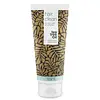What's inside
What's inside
 Key Ingredients
Key Ingredients

 Benefits
Benefits

 Concerns
Concerns

 Ingredients Side-by-side
Ingredients Side-by-side

Water
Skin ConditioningSodium Methyl Cocoyl Taurate
CleansingCocamidopropyl Hydroxysultaine
CleansingDecyl Glucoside
CleansingGlycol Distearate
EmollientSodium Lauroyl Lactylate
EmulsifyingSodium Cocoyl Glycinate
CleansingMaltooligosyl Glucoside
Skin ConditioningLinoleamidopropyl Pg-Dimonium Chloride Phosphate
Lauryl/Myristyl Polyricinoleate
EmollientBehenyl Alcohol
EmollientLaureth-23
CleansingSodium Cocoyl Isethionate
CleansingCeteareth-60 Myristyl Glycol
EmulsifyingCassia Hydroxypropyltrimonium Chloride
Hydrogenated Starch Hydrolysate
HumectantFurcellaria Lumbricalis Extract
Skin ConditioningPolyquaternium-47
Skin ConditioningPhytantriol
HumectantHydroxyacetophenone
AntioxidantPPG-2 Hydroxyethyl Cocamide
EmulsifyingLaureth-4
EmulsifyingPEG-150 Pentaerythrityl Tetrastearate
EmulsifyingTrisodium Ethylenediamine Disuccinate
Sodium Benzoate
MaskingCitric Acid
BufferingParfum
MaskingLinalool
PerfumingHexyl Cinnamal
PerfumingCitronellol
PerfumingLimonene
PerfumingWater, Sodium Methyl Cocoyl Taurate, Cocamidopropyl Hydroxysultaine, Decyl Glucoside, Glycol Distearate, Sodium Lauroyl Lactylate, Sodium Cocoyl Glycinate, Maltooligosyl Glucoside, Linoleamidopropyl Pg-Dimonium Chloride Phosphate, Lauryl/Myristyl Polyricinoleate, Behenyl Alcohol, Laureth-23, Sodium Cocoyl Isethionate, Ceteareth-60 Myristyl Glycol, Cassia Hydroxypropyltrimonium Chloride, Hydrogenated Starch Hydrolysate, Furcellaria Lumbricalis Extract, Polyquaternium-47, Phytantriol, Hydroxyacetophenone, PPG-2 Hydroxyethyl Cocamide, Laureth-4, PEG-150 Pentaerythrityl Tetrastearate, Trisodium Ethylenediamine Disuccinate, Sodium Benzoate, Citric Acid, Parfum, Linalool, Hexyl Cinnamal, Citronellol, Limonene
Water
Skin ConditioningSodium Laureth Sulfate
CleansingGlycerin
HumectantCocamidopropyl Betaine
CleansingMelaleuca Alternifolia Leaf Oil
AntioxidantPEG-7 Glyceryl Cocoate
EmulsifyingGlycol Distearate
EmollientDisodium Cocoamphodiacetate
CleansingPEG-4 Rapeseedamide
Phenoxyethanol
PreservativeCoco-Glucoside
CleansingCitric Acid
BufferingSodium Benzoate
MaskingPotassium Sorbate
PreservativeHydrogenated Castor Oil
EmollientGuar Hydroxypropyltrimonium Chloride
Skin ConditioningPEG-120 Methyl Glucose Dioleate
EmulsifyingTocopherol
AntioxidantTetrasodium Iminodisuccinate
Glyceryl Oleate
EmollientLimonene
PerfumingBenzoic Acid
MaskingWater, Sodium Laureth Sulfate, Glycerin, Cocamidopropyl Betaine, Melaleuca Alternifolia Leaf Oil, PEG-7 Glyceryl Cocoate, Glycol Distearate, Disodium Cocoamphodiacetate, PEG-4 Rapeseedamide, Phenoxyethanol, Coco-Glucoside, Citric Acid, Sodium Benzoate, Potassium Sorbate, Hydrogenated Castor Oil, Guar Hydroxypropyltrimonium Chloride, PEG-120 Methyl Glucose Dioleate, Tocopherol, Tetrasodium Iminodisuccinate, Glyceryl Oleate, Limonene, Benzoic Acid
Ingredients Explained
These ingredients are found in both products.
Ingredients higher up in an ingredient list are typically present in a larger amount.
Citric Acid is an alpha hydroxy acid (AHA) naturally found in citrus fruits like oranges, lemons, and limes.
Like other AHAs, citric acid can exfoliate skin by breaking down the bonds that hold dead skin cells together. This helps reveal smoother and brighter skin underneath.
However, this exfoliating effect only happens at high concentrations (20%) which can be hard to find in cosmetic products.
Due to this, citric acid is usually included in small amounts as a pH adjuster. This helps keep products slightly more acidic and compatible with skin's natural pH.
In skincare formulas, citric acid can:
While it can provide some skin benefits, research shows lactic acid and glycolic acid are generally more effective and less irritating exfoliants.
Most citric acid used in skincare today is made by fermenting sugars (usually from molasses). This synthetic version is identical to the natural citrus form but easier to stabilize and use in formulations.
Read more about some other popular AHA's here:
Learn more about Citric AcidGlycol Distearate serves as a pearlizing or opacifying agent in cosmetic products.
It's often included in cleansers and haircare products to give them a lustrous or shimmering appearance.
It is derived from stearic acid, a natural fatty acid commonly found in vegetable oils and animal fats.
Glycol Distearate isn't fungal acne safe.
Learn more about Glycol DistearateLimonene is a fragrance that adds scent and taste to a formulation.
It's found in the peel oil of citrus fruits and other plants such as lavender and eucalyptus. The scent of limonene is generally described as "sweet citrus".
Limonene acts as an antioxidant, meaning it helps neutralize free radicals.
When exposed to air, oxidized limonene may sensitize the skin. Because of this, limonene is often avoided by people with sensitive skin.
The term 'fragrance' is not regulated in many countries. In many cases, it is up to the brand to define this term. For instance, many brands choose to label themselves as "fragrance-free" because they are not using synthetic fragrances. However, their products may still contain ingredients such as essential oils that are considered a fragrance.
Learn more about LimoneneSodium Benzoate is a preservative. It's used in both cosmetic and food products to inhibit the growth of mold and bacteria. It is typically produced synthetically.
Both the US FDA and EU Health Committee have approved the use of sodium benzoate. In the US, levels of 0.1% (of the total product) are allowed.
Sodium benzoate works as a preservative by inhibiting the growth of bacteria inside of cells. It prevents the cell from fermenting a type of sugar using an enzyme called phosphofructokinase.
It is the salt of benzoic acid. Foods containing sodium benzoate include soda, salad dressings, condiments, fruit juices, wines, and snack foods.
Studies for using ascorbic acid and sodium benzoate in cosmetics are lacking, especially in skincare routines with multiple steps.
We always recommend speaking with a professional, such as a dermatologist, if you have any concerns.
Learn more about Sodium BenzoateWater. It's the most common cosmetic ingredient of all. You'll usually see it at the top of ingredient lists, meaning that it makes up the largest part of the product.
So why is it so popular? Water most often acts as a solvent - this means that it helps dissolve other ingredients into the formulation.
You'll also recognize water as that liquid we all need to stay alive. If you see this, drink a glass of water. Stay hydrated!
Learn more about Water